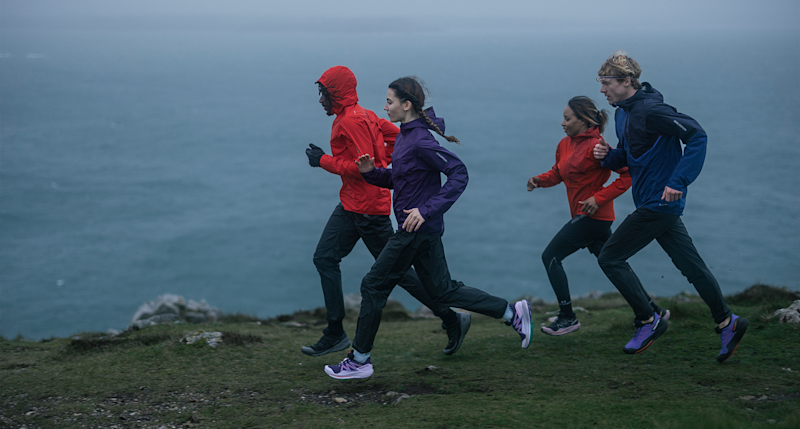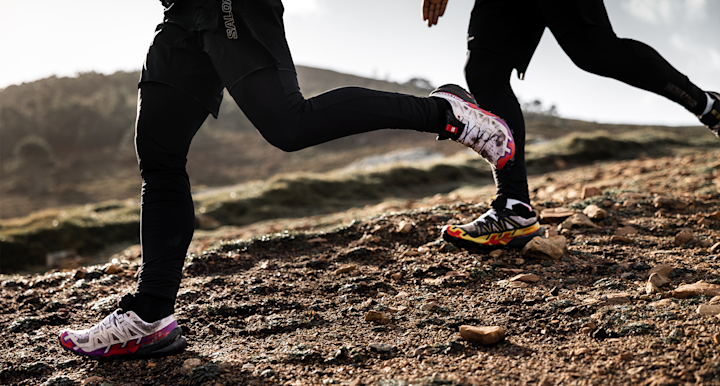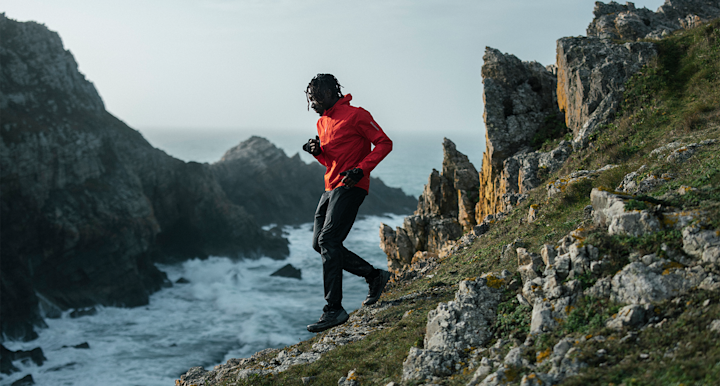
Which running shoes should I choose?
Whether you're a beginner or an experienced runner, when choosing running shoes, the first thing you need to do is look at your running style. Your running style includes your stride, the type of running you want to do (where, how far and how fast) and any personal preferences you may have – for example, how much contact you want and how closely you want to feel the surface. In this guide, we'll take you through three steps; stride, surface and technical and personal preferences.
Let's go!
What to consider when choosing running shoes
- Road shoes are for running on asphalt, smooth roads or treadmills and trail shoes are for running on uneven terrain and forest paths
- The drop is the height difference between the shoe's heel and toe
- Cushioning refers to the shock absorbtion – choose between minimal, normal and maximal cushioning


Identify your running style
Your stride is determined by which part of the foot you put on the ground first: the heel, the midfoot or the forefoot. Knowing your natural stride and shopping for running shoes based on that will optimize your running and reduce the risk of injury. Your natural stride also often gives you an indication of which drop you want to look for in your running shoes, a technical detail we'll get to in a moment.
Tip! Are you unsure which part of your foot hits the ground first? Film yourself in slow motion and/or ask a friend to watch you run!
Surface and running activity
Surface and type of running are decisive for which shoes you want to look at. For running on rough terrain and on forest trails, you'll want to look for shoes designed for trail running.
For running on asphalt, smooth roads or indoors on, for example, a treadmill, it is important that you choose a pair of running shoes specifically for running. This type of running is often called road running and requires a shoe designed for running to reduce the risk of injury and to help you get the most out of your run.
When you have identified your running style and figured out where you want to run, you need to think about what goals and expectations you have for your running training. Ask yourself questions such as; should I run shorter rides, or longer laps? Am I training for a marathon, or am I running for fun and health?
Distance running, i.e. longer runs, often demands a more well-cushioned shoe, while a wide tempo run likes to look for a lighter, responsive shoe where speed is the focus. If you are a beginner or an exercise runner who runs for fun and health, it is often a good idea to look at a running shoe with normal cushioning and a standard drop, in order to form an idea of the feeling you want in your running shoes over time.
Technical features and personal preferences
Once you've figured out what your natural stride is and what type of running you want to do, it's a good idea to think about what kind of contact you want and what kind of feel you prefer. Technical features such as drop and cushioning determine, for example, how much contact you can make with the ground, the feel of your stride and how stable your shoe is and feels.
Drop
The drop in a running shoe is the height difference between the shoe's heel and forefoot . To make it easy, we divide running shoes into shoes with a standard drop, and shoes with a low drop. Traditionally, running shoes have featured a higher drop, something many manufacturers are now moving away from and instead looking at lower drops towards 6–8 mm.
A running shoe with a standard drop often has a drop of more than 6 mm and is recommended for runners who put down the heel first. A running shoe with a drop between 6 to 8 mm fits most people, while runners who have problems with calves or heel tendons are recommended a running shoe with a higher drop – preferably around 10 mm and up.
A running shoe with a low drop often has a drop of 6 mm or less and is recommended for runners who put down the forefoot or midfoot first. Lower drops often need getting used to and are not recommended for runners who have calf or heel problems. However, if you are injury-free and looking for a shoe to run fast in, a shoe with a lower drop may be for you.

Cushioning
In addition to the height difference between heel and forefoot, you might also want to consider cushioning . The cushioning of a running shoe is its ability to absorb shocks . At Outnorth, we divide our running shoes into three categories; minimalistic , normally cushioned and maximally cushioned running shoes.
A minimally cushioned running shoe usually has no, or a very low drop and is suitable for those who aim for a barefoot stride, or are experienced runners and know that they usually land a little further forward on their foot. Running shoes with minimal cushioning are suitable for runners who want to “feel” their surface and have a lot of contact with the ground.
A normally cushioned running shoe has, as the name reveals, a fair amount of cushioning and is suitable for most runners and running activities, regardless of which part of the foot hits the ground first. Normally cushioned running shoes provide enough stability for faster running, but are also cushioned enough to provide comfort during longer runs.
Maximally cushioned running shoes are just that, maximally cushioned. A running shoe with maximum cushioning is suitable for beginners who have not yet worked up a strong running foot, but also for runners with sensitive feet and a running stride where the heel hits the ground first. Maximally cushioned running shoes also provide good protection for long-distance running on hard asphalt, but due to the very cushioned sole they can make the shoe less stable and obviously provide less contact with the ground – qualities that are often appreciated for tempo increases.
Good luck!